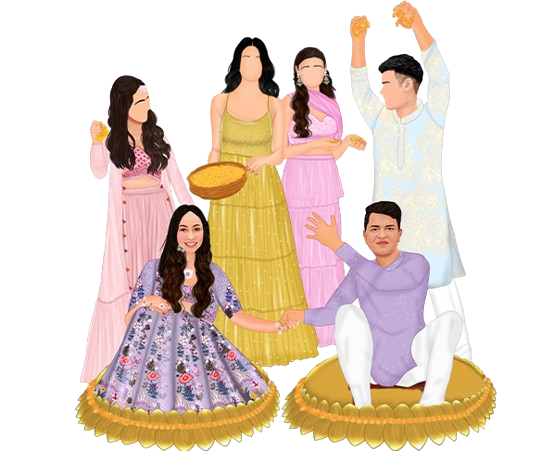Advertisement
By IS Team
Avoid Common Mistakes: Tips For Cultural Sensitivity In Corporate Invitations

Advertisement
In today's interconnected global business environment, Cultural Sensitivity in Corporate Invitations is not just a courtesy—it's a strategic imperative. These invitations serve as a mirror, reflecting a company's ethos and commitment to diversity.
By crafting invitations that consider language inclusivity, appropriate visuals, and cultural holidays, businesses can significantly enhance their global relations.
Tailoring invitations to respect diverse cultural norms fosters deeper connections, boosts a company's international image, and opens doors to broader opportunities.
This approach not only prevents cultural missteps but also reinforces the importance of embracing global diversity in every aspect of corporate communication.
Understanding Cultural Sensitivity

Advertisement
Cultural sensitivity in corporate communications is the art of crafting messages that respect and value the diversity of a global audience. It's about ensuring that communications resonate positively across different cultures, and that everyone feels understood and appreciated.
What is Cultural Sensitivity?
In the corporate world, cultural sensitivity means tailoring the language, tone, and content of communications to avoid cultural biases and embrace inclusivity. It involves understanding that different cultural contexts may require different approaches to communication.
Examples of Culturally Sensitive Practices in Business
- Inclusive Language: Opt for general terms like "holiday season" instead of specific cultural references like "Christmas" to include various traditions during that period.
- Cultural Nuances: For example, adopting a formal tone in communications to business partners in Japan can reflect an understanding of the cultural emphasis on respect and formality.
- Feedback Mechanisms: Utilize surveys or forums to allow stakeholders to express how company communications meet their cultural needs.
- Cultural Training: Regular training sessions for employees can foster an environment of respect and cultural awareness.
- Celebrating Diversity: Featuring diverse cultural celebrations in company media showcases inclusivity and educates the community.
These practices enhance communication, strengthen relationships, and build a strong global reputation. Cultural sensitivity is not just about tolerance but about actively appreciating and integrating diverse perspectives into corporate communications.
The Role of Corporate Invitations in Business Communication

Corporate invitations are more than just announcements; they are a vivid reflection of a company's brand and values, and a critical piece of business etiquette. These invitations not only convey professionalism but also show the company’s attention to detail and respect for the recipient.
Reflection of Corporate Etiquette and Values
Each invitation is a statement of identity—its design, wording, and delivery method speak volumes about a company’s standards and principles. For example, an elegantly designed invitation suggests a commitment to excellence, while an environmentally friendly card reflects a dedication to sustainability.
Advertisement
Setting the Tone for Events and Meetings
Corporate invitations set the initial tone for events, building anticipation and shaping attendees' expectations:
- Expectation Management: The formality of the language and quality of materials inform guests about the event's nature—be it formal, casual, or innovative.
- Cultural Alignment: Aligning with cultural norms shows respect for the diversity of the audience, like choosing culturally appropriate colors or avoiding significant holidays.
- Emotional Engagement: Personal touches can generate excitement and connect emotionally with invitees, making them feel valued and more likely to attend.
In short, corporate invitations are strategic tools that reinforce a company’s brand, demonstrate cultural sensitivity, and enhance the overall experience of corporate events. They are pivotal in ensuring events are perceived positively and are successful in achieving their objectives.
Common Pitfalls in Corporate Invitations

Navigating the delicate terrain of corporate invitations requires a keen awareness of cultural nuances. However, missteps do happen, and understanding these common pitfalls can help companies avoid them.
Examples of Culturally Insensitive Mistakes
- Inappropriate Images: Using imagery that has different cultural connotations or is considered disrespectful in certain cultures can alienate recipients. For instance, the color white is often associated with weddings in Western cultures but is traditionally worn at funerals in many Eastern cultures.
- Insensitive Language: Employing language that may seem casual or humorous in one culture but offensive in another. Jokes and idioms, in particular, can easily get lost in translation and come across as insensitive.
- Overlooking Important Holidays: Scheduling major corporate events without considering the cultural or religious holidays of all invitees can lead to low attendance and feelings of exclusion, such as planning an event during Ramadan, when many Muslim attendees may be fasting.
Consequences of Ignoring Cultural Sensitivity
- Damaged Relationships: A culturally insensitive invitation can offend and alienate potential attendees, damaging long-standing relationships. It sends a message of carelessness and disrespect towards the cultural values and practices of others.
- Loss of Business Opportunities: Such blunders can lead to more than just immediate embarrassment; they can tarnish a company's reputation and result in lost business opportunities. In today’s globally connected market, the fallout from cultural insensitivity can spread quickly and widely, affecting partnerships and customer loyalty.
Avoiding pitfalls in corporate invitations requires a proactive approach to cultural understanding. Companies should aim to create culturally respectful and inclusive invitations that enhance relationships and underscore their commitment to diversity, ensuring the success of their events.
Key Components of Culturally Sensitive Corporate Invitations

Creating culturally sensitive corporate invitations involves careful consideration across several key areas:
Language Use: Choosing Appropriate and Inclusive Language
Opt for clear, inclusive language that avoids jargon, slang, and idioms, ensuring the invitation is understandable and respectful to all cultural backgrounds.
Visuals and Design: Selecting Neutral and Respectful Designs
Choose neutral, elegant designs like generic floral patterns or abstract art that are aesthetically pleasing without being culturally specific or offensive.
Date and Time Considerations: Respecting Cultural and Religious Observances
Avoid scheduling events during major religious or cultural holidays, such as Ramadan or Yom Kippur, to show respect for the diverse schedules and practices of all invitees.
Dress Codes: Understanding Cultural Norms Regarding Attire
Specify a flexible dress code like 'business attire,' allowing for cultural variations in professional dress while maintaining a standard.
By adhering to these guidelines, companies can create invitations that are not only culturally respectful but also enhance the inclusivity and effectiveness of their corporate events.
Cultural Sensitivity Towards Specific Groups

Advertisement
To foster inclusivity and respect in corporate communications, it’s essential to tailor invitations to reflect the diversity of the audience. Understanding the cultural, ethnic, and religious nuances can transform a standard invitation into a thoughtful gesture of respect.
Guidelines for Addressing and Respecting Diverse Groups
Personalization: Tailor invitations to address recipients by their preferred titles and names correctly, respecting cultural naming conventions. This shows attention to detail and respect right from the beginning.
Language Considerations: Offer translations or bilingual options where significant language barriers exist, ensuring that all recipients feel included and valued.
Cultural Themes: While it’s crucial to avoid stereotypes, incorporating subtle cultural elements that resonate with a specific group can add a personal touch. For example, using colors that have positive connotations in a particular culture.
Consultation: Engage with cultural consultants or community leaders to review invitations, ensuring accuracy and appropriateness of cultural references.
Case Studies of Well-Crafted Invitations
Global Tech Conference: A tech company hosting an international conference designed invitations with a world map background highlighting the different countries of the attendees. They included details in five languages and provided clear instructions on cultural practices during the event, such as greetings and dress code.
Holiday Gala: A corporation hosting a holiday gala during the winter season sent out invitations that celebrated 'Winter Festivities' instead of focusing on any specific religious holiday. The design featured winter themes, and the invitation was careful to respect the spectrum of cultural observances during the season.
These examples showcase how thoughtful consideration of cultural elements in invitations can enhance the experience for all attendees. By integrating cultural sensitivity into every aspect of the invitation process, companies can build stronger, more respectful relationships with diverse groups, setting the stage for successful and inclusive events.
Strategies for Enhancing Cultural Sensitivity in Invitations

Adopting a proactive approach to cultural sensitivity in corporate invitations can significantly improve business relations and enhance the inclusivity of corporate events. Here are some effective strategies for refining this process:
Training Staff on Cultural Competence
Empower your team with the knowledge they need by investing in comprehensive cultural competence training. These sessions should cover a range of topics, from basic cultural awareness to specific communication styles and traditions across different cultures. Equipped with this knowledge, staff will be better prepared to craft respectful and effective invitations.
Utilizing Cultural Consultants or Sensitivity Reviewers
Bringing in experts who specialize in cultural nuances can make a world of difference. Cultural consultants or sensitivity reviewers can provide valuable insights and feedback on invitation content, ensuring that nothing offensive or inappropriate slips through. Their expertise can help prevent potentially costly mistakes and enhance the cultural appropriateness of each communication.
Best Practices for Revising Existing Templates and Guidelines
Review and update your existing invitation templates and guidelines regularly to reflect current best practices in cultural sensitivity. This should include:
- Language updates to ensure wording remains inclusive and respectful.
- Design adjustments to avoid stereotypes and ensure visuals are universally acceptable.
- Protocol changes that consider a broader range of cultural holidays and observances.
Implementing these strategies will not only improve the quality and reception of your corporate invitations but also demonstrate a genuine commitment to cultural sensitivity. This thoughtful approach can strengthen relationships and open doors to global opportunities, setting a foundation for successful and respectful business interactions.
Benefits of Culturally Sensitive Invitations

Culturally sensitive invitations can significantly impact a company's success on a global scale. Here are some key benefits:
Strengthening of International Partnerships and Client Relationships
Tailoring invitations to respect cultural norms demonstrates a company's commitment to diversity, fostering trust and strengthening relationships with international clients and partners.
Enhancing Company Image and Brand Reputation Globally
Culturally sensitive practices in invitations enhance a company's reputation, showcasing it as thoughtful and respectful in its communications. This positive image encourages loyalty among global customers and can attract new business.
Examples of Successful Culturally Sensitive Invitations and Their Impact
- A company hosting an international summit used invitations in multiple languages and adjusted event times to cater to different time zones, greatly increasing attendance and participation.
- Another firm avoided scheduling conflicts with major cultural holidays in its event planning, resulting in higher turnout and positive feedback from attendees.
These examples highlight how culturally sensitive invitations not only prevent missteps but also enhance business opportunities and relationships across diverse cultures.
Frequently Asked Questions
Q1. What are the risks of not using culturally sensitive language in corporate invitations?
Using language that is not culturally sensitive can lead to misunderstandings, offend invitees, and potentially harm the company's brand reputation by showing a lack of respect for diverse cultural norms.
Q2. How can small businesses ensure their corporate invitations are culturally sensitive?
Small businesses should seek advice from cultural experts or use community resources to understand better and integrate cultural nuances into their invitations. Engaging with their diverse customer base for feedback can also be invaluable.
Q3. Are there specific colors that should be avoided in corporate invitations due to cultural reasons?
Yes, certain colors have different meanings in various cultures; for example, white is often associated with mourning in some Asian cultures, while it represents purity and weddings in many Western cultures. Research and cultural consultation can help choose appropriate colors.
Q4. What role does cultural sensitivity play in virtual event invitations compared to in-person events?
Cultural sensitivity is crucial for virtual event invitations as these events can reach a global audience. Ensuring that the time zones are considered, languages are appropriately used, and cultural holidays are respected can increase participation and engagement.
Advertisement
I'm Looking For!








